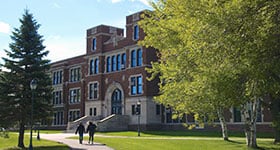Although the concept is not new, culturally responsive teaching has gained a great deal of traction during the last few decades. According to an article from the learning nonprofit Understood, school leaders and teachers are working to make their communities and lessons more responsive to the specific needs of students. They work to learn about the cultural and personal backgrounds of their student communities and how those factor into the learning experience. Educators create a more meaningful and relevant classroom for all students by catering to their students’ backgrounds.
The University of Wisconsin-Superior (UW-Superior) online Master of Science in Education (MSE) – Special Education program equips educators with the necessary knowledge and awareness to build culturally responsive classrooms. Through courses like The Exceptional Learner and Methods in Adaptive Instruction, graduates gain the skills to apply intersectional thinking for learners and foster success.
What Is Intersectional Thinking?
The goal to build culturally responsive classrooms relates to the general effort to help every student experience a sense of belonging and comfortability in sharing their voices. However, intersectional teaching breaks these ideas down a step further. It not only accommodates student backgrounds at large but also addresses the unique identities of individuals and how those identities intersect in ways that affect their learning experience. Cultural considerations are one piece of the identity puzzle, but students also bring socioeconomic, mental health, educational, sexuality, ability, neurodiversity, language, citizenship and other identity differences into the classroom environment.
Race, culture, sexual orientation, gender identity, religion and other factors impact not only students’ personal lives but also their education. Students with special needs or exceptionalities are no different. These students deserve a culturally responsive environment that recognizes, respects and accommodates their exceptionalities.
A post from the education nonprofit Northwest Evaluation Association (NWEA) uses English language learning (ELL) students as an example of intersectional thinking. Of the approximately 10% of the U.S. student population who are ELL students, 93% are students from Black, Indigenous and People of Color (BIPOC) populations. This means that “although not all [BIPOC] students are emergent bilinguals, we cannot talk about emergent bilingual students without also talking about race and intersectionality.”
Representing Different Exceptionalities in Students
According to the Council on Quality and Leadership, one of the best ways to make exceptional students feel welcome is to create a safe learning environment and creating space to hear all student voices. Educators and other school leaders must understand that there is power in being able to articulate these identities and normalize them for all students.
As the source says, “Avoiding talking about disability or race with people with IDD [intellectual and developmental disabilities] denies people their identities as well as denies them community, and the sense of belonging which can come with both.” Fostering discussion around different disabilities, exceptionalities and abilities helps prevent exceptional students from being “othered” and excluded.
This can also apply to classroom materials. Educators must create curricula and provide learning materials representing all exceptionalities and disabilities. These must include physical, emotional, sensory, mental, intellectual, developmental, communicative, health-related or neurological differences.
Create Intersectional Practices
Differentiating lessons for exceptional students can be time-consuming, but the rewards for both students and teachers are vast. By considering the background of their student population, teachers offer a level of specialized instruction that students might not otherwise receive, according to NWEA. This can mean providing additional visual tools for students with low vision or using audio enhancements to ensure all students can hear. It can mean flexible seating arrangements for students who are restless or need additional room to work.
The more teachers accommodate the needs of exceptional students and streamline them into their lessons as the standard, the better. Teachers often discover that accommodations can benefit a variety of intersectional identities among students — not simply those with disabilities or exceptionalities.
The tenets of culturally responsive teaching and intersectionality are integral to learning outcomes. Graduates of UW-Superior’s online MSE – Special Education program gain a broad understanding of how to create a culturally responsive teaching environment and manage the intersectional points for students with exceptionalities.
Learn more about UW-Superior’s online Master of Science in Education – Special Education program.


